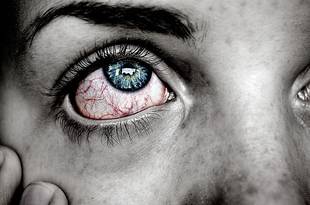
Shock is a common complication of injury, infection, burns and other conditions. It is not a consequence of emotional stress such as the sudden death of a loved one.
Shock is a condition in which there is a slowing or diminution of the flow of the blood around your body. This produces a decrease in your blood pressure and an inadequate volume of red blood cells. The result: the supply of oxygen to tissues falls below normal amounts. This decrease may produce various symptoms.
Seek emergency assistance if you recognize the signs of shock. Shock is a medical emergency that requires appropriate and immediate care. You can take certain simple steps to help alleviate the symptoms, but summon professional medical help immediately.
Kinds Of Shock
Shock is sufficient blood flow resulting in an oxygen deficiency for normal functioning. It can result from serious bleeding injuries, major trauma, or dehydration resulting from loss of fluids due to vomiting or diarrhea. This type of shock is called hypovolimic shock because it results from too little blood volume (hypo comes from the Greek word that means "below"; thus, below-volume shock).
Cardiogenic shock results when the heart does not pump effectively. Causes may include heart attack or heart arrhythmia.
When blood vessels' size or tension is affected, vasogenic shock (vaso for "blood vessel") can be a result. Causes include insect and bee stings infection.
Symptoms Of Shock
The following signs and symptoms indicate the presence of shock in an ill or injured person:
- Skin
- It may appear pale or gray and it is cool and clammy to the touch.
- Pulse and Breathing
- The heartbeat is weak and rapid and is accompanied by a shallow hurried breathing pattern. Blood pressure is reduced, perhaps below measurable values.
- Eyes
- The eyes are lusterless, staring, perhaps with dilated pupils.
- Alteration Of Consciousness
- The shock victim may be unconscious, but even if still awake, he or she is likely to be faint, confused, or weak. Sometimes a person in shock becomes anxious and excited. A lot of people in shock will complain of being thirsty, Do not give fluids except for small sips of water or ice chips.
- The person in shock must be treated immediately.
First Aid Treatment
Serious injury, especially one that involves considerable blood loss, is likely to be accompanied by shock. Immediate first aid treatment for shock is essential. Even if a person who has been hurt seems alert and in control, give him treatment for shock.
1. Get hospital care as soon as possible. Shock in each of its forms is potentially life-threatening. Care by medical professionals with appropriate equipment is essential.
2. Get the person to lie down. Lay the person down, face upward, with the head below the level of the feet. This position will help maintain blood flow to the brain and may relieve symptoms of faintness. Elevating the feet on a chair, cushions, or another available prop is usually the easiest means to establish this position. However, if the person has sustained an injury in which raising the legs will cause pain, leave the person flat on his or her back.
3. Keep the person warm and comfortable. Loosen tight collars, belts, or constricting clothing. Cover the person with a blanket if the air is cold; if the ground is cold, put the blanket beneath the victim. If it is hot outside, position the person in the shade if possible, on top of a blanket or coat or other material.
4. If the person is vomiting or bleeding from the mouth. Position the person on his or her side. This position will help prevent choking or inhaling the vomiters or blood and make the person more comfortable.
5. Treat injuries appropriately. If an injury has occured, stop any bleeding, immobilize any fracture, or take other appropriate first aid steps. Handle potential spinal injuries with special caution. The pain from a fracture that is not immobilized can worsen shock.


















